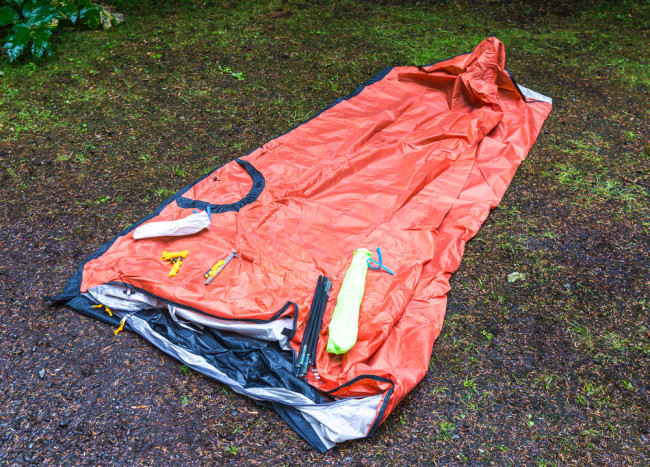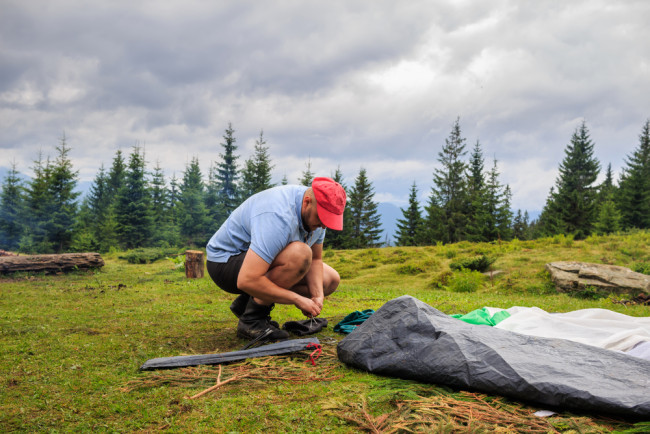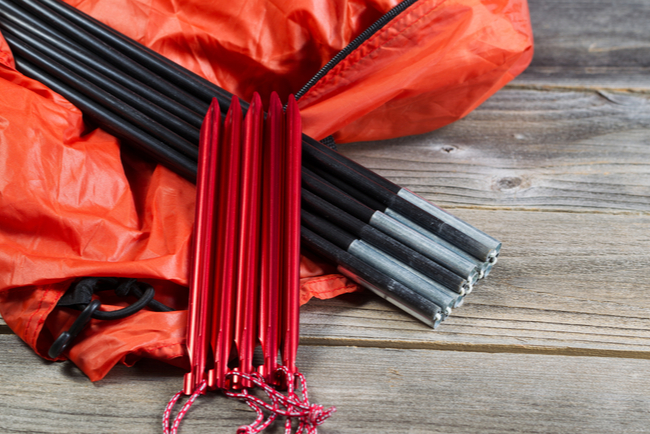
Whether you’re checking over before heading off on a trip or getting ready to come home from your adventures, you need to know how to pack away your tent.
An expedition, festivals, Duke of Edinburgh, or just a camping holiday, tents come in all shapes and sizes, so each has their own trick for packing away. So, you need to make sure you pack your tent away correctly or you could end up regretting it on your next holiday.
Winfields Outdoors is here to help with our guide to packing away a tent. We’ll help you on the steps you need to take, from drying and cleaning to checking for rips and tears. Each is important for making sure your tent stands the test of time, no matter where you go.
Read on to find out how to pack away your tent correctly and the extra tips to make your tent last for adventures to come…
Why is it so important to pack your tent away properly?
The long and short of it is that if you don’t pack away your tent correctly, then, when you come to get it out for next year, it could be broken or have other issues with it that it’s too late to fix.
Any problems that your tent has when it gets packed away will still be there, and it may well have developed new ones in the process.
Read more: The Importance of Checking Your Tent Before You Camp
So, how do you pack it away correctly? Besides following your tent instructions, here are some essentials when you take your tent down.
Dry your tent before it’s packed away
If you’ve been camping in the UK, then there’s a reasonable chance you saw a bit of rain during your holiday. If you were really unlucky then you may even have had to pack up your tent in the rain, which is never fun. It’s also really not great for your tent.
If you leave your tent wet in its bag, then there’s a good chance it will be covered in mould or mildew when you next get it out. This will mean having to thoroughly clean the tent, which may well delay your camping holiday hopes.

Therefore, if you do pack it away wet, then you need to dry and air it out as soon as possible when you get home. And make sure that the whole of the tent is dry, including areas such as the pegging points and guy lines.
If you’re sat there remembering that your tent was wet, then go and unpack it again and dry it out.
Check for rips, tears & breaks
Modern tents are pretty strong and can withstand a fair amount of wear and tear. But they’re not indestructible, and sometimes they may pick up the odd rip.
Therefore, it’s important that you deal with these before you pack your tent away. Not only could the rips become worse over time, but the last thing you want is to get to your campsite, try and pitch the tent and then realise you have a broken pole or a hole in your groundsheet.

Read more: The Ultimate Guide to Tent Repair & Maintenance
Carefully check over your whole tent, including the poles, to inspect for any damage when at home. If the damage is minor then you may be able to mend it yourself, but if the damage is a little more severe then it could require replacing part of it or even the whole tent.
You can purchase replacement tent poles and guy lines at Winfields along with repair kits, such as tape.
Fold or roll your tent properly
It may be tempting to just try and squash your tent into its bag, but this will do more harm than good. You could damage both the tent and the bag, which could result in having to buy a brand new tent.
It could also ruin the natural shape of the tent, making it more difficult to pitch next time around.
Bag pegs and poles
Your tent pegs and poles should come with their own little bag to store them in, and it’s there for a reason.

Make sure that you store all your pegs and poles (and anything else that’s a bit sharp) in their correct bags, or they could damage your tent when packed away. You don’t want to pierce the tent having checked it all over or bought it new.
If you can’t find the bags then just use anything else you have to wrap them up and protect your tent from the sharp points.
How to care for a tent - Tent Tips
- Air it out: before taking your tent down, open it up and air it out for a couple of hours.
- Sweep and clean: you’ll need to clean any debris, dust and dirt out from inside your tent.
- Don’t zip it up: partially zip the tent doors to leave some room for air to escape when folding it up.
- Duct tape: this is a camper’s best friend, ensure you have some for patching holes or small rips and fixing poles until you get a replacement.
- Footprints: a removable groundsheet to protect the underside of your tent from wet ground or debris.
- Seam sealant: if you find a leaking seam, just re-cover it with sealant and leave it to take to the material.
- Storage: Avoid placing the tent on its end when storing it as this can damage the poles, just lay it flat.
Read more: Best Way to Waterproof a Tent
If you can’t find the bags then just use anything else you have to wrap them up and protect your tent.
Take a look at our full range of tent accessories or entire tents collection including:
Tents by Size | Family Tents | Polycotton Tents | Tents by Brand
Read more from the Winfields Blog to set you up for 2020...
⛰ 🏕 🌳
Don’t forget to take a look at our camping blog for more posts like these…
The Best UK Campsites To Stay At in 2020 | The 10 Best Family Camping Tents 2020 | Inflatable Tent & Air Tent Buying Guide








